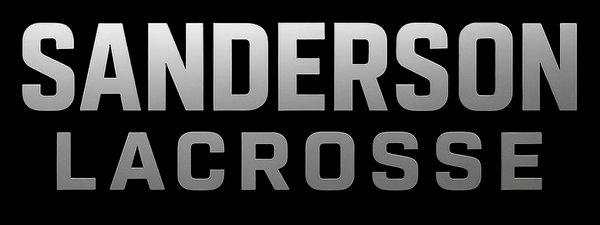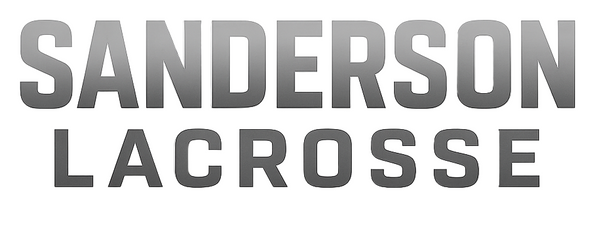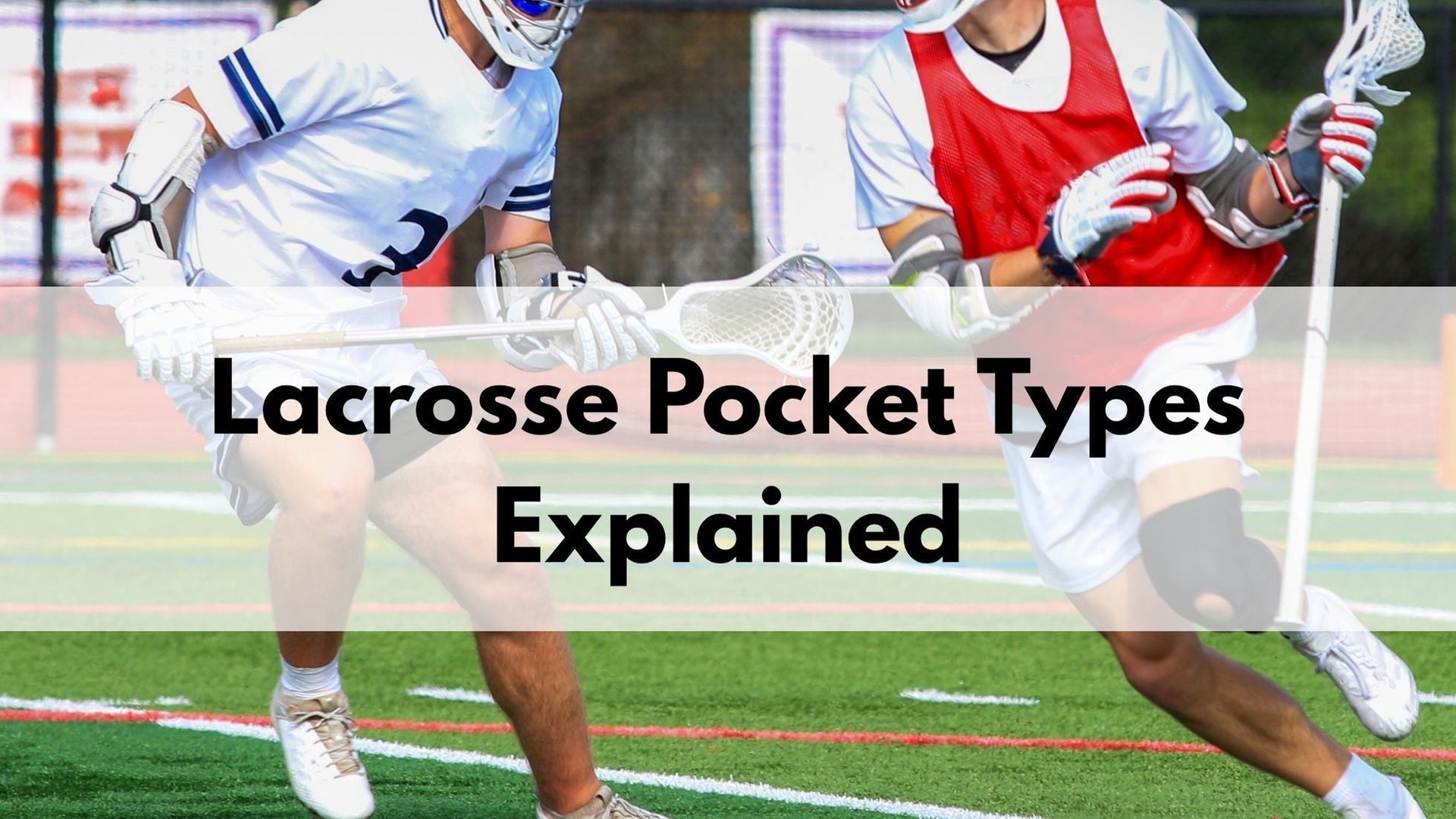
Choosing the right pocket is one of the biggest factors in how your lacrosse stick actually plays. Two players can use the same head, same mesh, same shaft—and have completely different results because their pockets are set up differently. So if you’re trying to build consistency, improve your shooting, or just feel more confident with the ball in your stick, understanding pocket placement is crucial.
In this guide, I’ll cover the three most common pocket styles—mid, mid-low, and mid-high—explain how they affect your passing, shooting, and control, and help you figure out which pocket best fits the way you play. With more options in pocket styles and stringing configurations available than ever before, players can truly customize their sticks to match their unique playing needs.
What Pocket “Placement” Actually Means

Pocket placement refers to where the deepest point of the mesh sits inside your lacrosse head, directly influencing the depth of the pocket. The depth affects ball control, shooting, and overall performance, making it a crucial factor in how your stick plays. Even though it sounds simple, that one small detail changes:
- How quickly the ball leaves the stick
- How much hold you have
- Your release angle
- Your passing accuracy
- How the stick feels while cradling
- Your shot trajectory
- Pocket depth, which changes with different placements and impacts ball retention and handling
To help you visualize it, here’s a simple breakdown:
- Mid-Low Pocket: Lower in the head, closer to the throat
- Mid Pocket: Dead center
- Mid-High Pocket: Higher up, closer to the scoop
Each one has strengths… and each one has trade-offs.
Mid-Low Pocket (Best for Finishers & Ball Carriers)
A mid-low pocket sits deeper toward the throat of the head. This gives you a really smooth, controlled feel when the ball is in your stick. A mid-low pocket can also make one handed cradling and handed cradling easier, especially for attackmen who need to dodge or protect the ball during play.
Why Players Like It
A mid-low pocket is great if you play close to the crease or if you handle the ball under pressure a lot. The ball naturally settles deeper, giving you more control while rolling off picks, dodging in tight, or finishing inside.
However, while a mid-low pocket offers excellent control, players should be careful not to let the pocket become too much of a 'bag,' as this can affect both legality and performance. Proper stringing is important to maintain the right pocket tension and avoid penalties.
🔥 Best For
- Inside finishers
- Attackmen who carry a lot
- Players who like “feel”
- Slow, controlled releases
- Dodging from X
- Players in the attack position or whose position requires close ball control
✔ Pros
- Excellent hold
- Easy to cradle and protect the ball
- Very consistent passing
- Great for in-tight finishing
- Exceptional ball control for superior handling and reliable ball retention
❌ Cons
- Slower release
- Not ideal for long-distance shooters
- Can feel “heavy” if too deep
Recommended Head for a Mid-Low Pocket
If you want to try this setup, the Warrior Burn XP handles a mid-low pocket extremely well.
View the head → (paste your product link here)
Sanderson Tip
If you struggle with turnovers while dodging, or you love operating from X or GLE, a mid-low pocket can make your stick feel instantly more secure.
Mid Pocket (The Most Versatile + Most Popular Option)
A mid pocket sits right in the center of the head. This gives you a perfect blend of hold, control, and quick release.
The mid pocket is a popular style because it adapts well to a variety of playing styles and preferences.
It’s the “do everything” pocket.
Why Players Like It
Mid pockets work for pretty much every playstyle. You get enough hold to dodge confidently, but enough whip and release speed to shoot from anywhere.
This is the pocket most college and pro players default to.
🔥 Best For
- All-around attackmen
- Midfielders
- Newer players who want a consistent feel
- Players who both feed and shoot
- Two-handed dodgers
- Players in various positions—including attack, midfield, and defense—who want a pocket that works well across different roles
✔ Pros
- Balanced—you can do everything
- Smooth release
- Good hold without being “baggy”
- Reliable for outside shots
❌ Cons
- Not as much hold as a mid-low
- Not as much quick-release as a mid-high
🔗 Recommended Heads for a Mid Pocket
-
ECD Mirage 3.0 – one of the best all-around heads for a mid pocket
See the Mirage 3.0 → -
StringKing Mark 2A – super consistent and adaptable
View the Mark 2A →
⭐ Sanderson Tip
If you ever feel unsure what pocket to choose, start here. Mid pockets are the safest, most versatile option in lacrosse.
Mid-High Pocket (Best for Shooters & Quick Passers)
A mid-high pocket sits closer to the scoop, giving the ball a higher release point and enabling a quicker release. This setup is ideal for players who need to throw quick passes or shots in tight windows, as it allows for faster ball movement and improved accuracy when passing or shooting in motion with limited time and space.
Why Players Like It
A mid-high pocket adds whip and power without feeling too baggy. The ball exits the stick faster, which helps with shooting from range, feeding under pressure, and threading passes before the defender can react. If you like a fast stick, this setup will feel natural.
Additionally, a mid-high pocket is especially effective for making accurate passes and powerful shots during gameplay, giving players better control for both passes and shots.
🔥 Best For
- Outside shooters
- Quick feeders
- Attackmen who pass under pressure
- Players who shoot on the run
- High-angle releases
- Players focused on offense and quick ball movement
✔ Pros
- Very quick release
- Great for shooting power
- Crisp, fast passing
- Ideal for feeding in tight windows
- Allows players to dominate the field with fast, accurate play
❌ Cons
- Not as much hold while cradling
- Less forgiving for beginners
- Requires cleaner mechanics
Recommended Heads for a Mid-High Pocket
Maverik Kinetik 3
The Kinetik 3 is one of the best options for a mid-high pocket. It’s stiff, accurate, and naturally shaped to form a well defined channel, which improves ball release and control. If you want extra pop on your release, this head will give you exactly that. Shop the Kinetik 3 →
STX X2O — Surprisingly Excellent for Mid-High Pockets
While the STX X2O is known as a stiff, dependable head often used by defenders, it actually performs extremely well with a mid-high pocket. The stiffness helps maintain a consistent channel, and its customizable sidewall patterns help preserve pocket shape and optimize stringing for different playing styles. This means:
- A fast, clean release
- More shooting power
- Better accuracy on quick passes
- A “snappy” feel without being too whippy
If you want a head that supports a mid-high pocket and stays stable through checks, the X2O is a great choice. Shop the STX X2O →
⭐ Sanderson Tip
If you like the ball to come out fast — especially on feeds or step-down shots — a mid-high pocket is the setup you’ll feel most confident with. It rewards quick hands and aggressive shooting mechanics.
Which Pocket Should YOU Use?
If you dodge and carry more than you shoot:
➡ Mid-Low
Recommended Head: Burn XP →
If you do a bit of everything:
➡ Mid
Recommended Heads: Mirage 3.0 / Mark 2A →
If you shoot or feed fast:
➡ Mid-High
Recommended Heads: Kinetik 3/ STX X20 →
Does the Pocket Change Your Passing & Shooting Mechanics?
Absolutely.
A mid-high pocket changes your release angle by a few degrees, which is often the difference between skipping the ball or hitting your target clean.
Pocket placement also affects the grip and feel of the stick during play, influencing how securely you can control the ball.
A mid pocket gives you a neutral release, making everything feel predictable.
A mid-low pocket lets the ball sit deeper, which slows your release slightly but increases control.
If you’ve ever wondered why your stick “feels off,” even though everything looks fine… it’s probably the pocket placement.
Final Recommendation
If you’re new, or if you want a stick that feels consistent no matter where you are on the field, go with a mid pocket. The mid pocket is an excellent choice for most players due to its versatility and consistency.
If your game is built on dodging, protecting the ball, and getting inside touches, try a mid-low pocket.
If you’re a shooter or a fast passer—and you want the ball snapping out of your stick quickly—run a mid-high pocket.
And if you still aren’t sure, bring your head into the shop or message us—we’ll help you choose the right setup based on how you play. Pocket placement can ultimately increase your performance.



